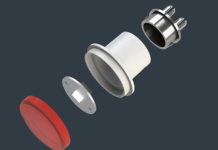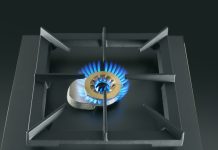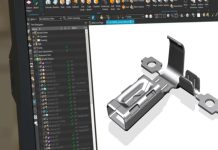 As reported on the company’s website, Ernesto Ferrario (Electrolux SVP Global Industrial Operations) shares the Electrolux vision of the smart factory, and how it will benefit both customers and the environment.
As reported on the company’s website, Ernesto Ferrario (Electrolux SVP Global Industrial Operations) shares the Electrolux vision of the smart factory, and how it will benefit both customers and the environment.
How is digitalization affecting manufacturing at Electrolux?
The manufacturing industry is experiencing exponential technological acceleration combining the Internet of Things (IoT), automation, data exchange and massive computer power. This is an exciting opportunity for Electrolux to improve efficiency, improve quality, better serve our customers, and produce best-in-class solutions with a reduced environmental impact. It’s also key in maintaining our competitive edge in the appliance industry, where it’s increasingly important to be able to adapt quickly to consumer demands. Looking at the megatrends affecting our business, one of the most important is that the power in the marketplace has shifted towards the consumer who is constantly connected with the best information at their fingertips. Online retailing in particular has turned the industry upside-down. If a washing machine is not available at their first stop, customers will simply look elsewhere. As an appliance manufacturer, this means we have to be quicker and more flexible in adapting our offering and supply chain.
So what is the main focus when it comes to digitalization in manufacturing?
Our ultimate vision is to have factories where people are working together with smart robots and our operations are fully digitalized so we can be flexible and fast when fulfilling market requests. In order to provide our customers with a best-in-class consumer experience, we must deliver all orders 100% on time. Our manufacturing must be responsive and reliable and digitalization is key to making it succeed. This means our focus is on establishing a new way of working that incorporates digital manufacturing, smart automation, sustainability, and standardization with lean manufacturing principles.
What could the future factory look like?
We are building a digitally controlled and managed environment within our factories that monitors all manufacturing information and receives data from robots and machine monitors in real-time. Imagine a factory full of cutting edge solutions, made up of a highly interconnected ecosystem which senses almost everything that happens within it.
Connecting our factories to the cloud will enable monitoring of assembly lines in real time so that functions further down the value chain will be able to change their planning on the fly. This kind of information will be available on a range of devices, including smartphones and tablets, allowing for fast reaction times. This will be the Electrolux smart factory.
Can you give some examples of new technologies being introduced?
We have already introduced many digital technologies into our factories – such as virtual 3D manufacturing to eliminate any potential problems, process constraints and assembly line interferences before actual physical production of the product. Collaborative robots (cobots) for quality testing, and 3D printing of spare parts for our machinery are other examples.
For our factory operators we are currently running several pilots looking at wearable technology such as augmented reality glasses, robotic gloves and exoskeletons. It provides an opportunity to work with new and exciting technologies that help improve their safety, working conditions, productivity and in turn cost excellence. It is not a case of man or machine – rather man and machine. We will need highly skilled, digital-savvy workers to operate and work with these new solutions.
You mentioned reducing environmental impact. Can you tell us more?
As we shape the smart factory and introduce new ways of working through digital solutions, this in turn allows us to become even more efficient so that all our operations are focused on meeting our ambitious environmental targets for 2020. We want to improve energy efficiency by an additional 20% compared with 2015 at all manufacturing sites and warehouses worldwide, reduce water consumption by 5% every year in areas of water stress until the site has reached optimal levels of efficiency, increase our share of renewable energy for our operations to 50% and implement a zero landfill program at all manufacturing sites.



